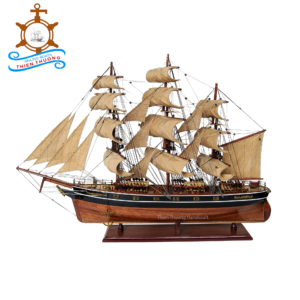Product Description
Sorry, this item is no longer available for sale. If you initiate a reproduction request, we need a min order of 10-20 units/item.
Viking ships were marine vessels of particular designs used and built by the Vikings during the Viking Age. The boat-types were quite varied, depending on what the ship was intended for, but they were generally characterized as being slender and flexible boats, with symmetrical ends with true keel. They were clinker built, which is the overlapping of planks riveted together. Some might have had a dragon's head or other circular object protruding from the bow and stern, for design, although this is only inferred from historical sources.
Sorry, this item is no longer available for sale. If you initiate a reproduction request, we need a min order of 10-20 units/item.
| Dimensions | 64L x 18W x 51H (cm) |
|---|

The first large three-decker, the Royal Louis was completed in Toulon in 1668, and was registered at 200 tons. The Royal Louis was a 3-deck vessel with 120 guns. Her captain was a Squadron Admiral. She was one of the most powerful firsrank vessels belonging to the French Royal Navy at that time. Our ship model represents the Royal Louis according to the plans of 1779, when she was Admiral-Ship of the Blue and White Squadron, being part of the American Squadron, also called Eark d’Estaing’s.

In 1869 John Willis, a shipowner and ship's captain from London, commissioned the building of the clipper CUTTY SARK in order to beat the THERMOPYLAE (built one year before) in the “tea race”. The name CUTTY SARK is of Scottish origin and means “short shirt”. The figurehead is a witch called Nannie.
Under 1877 the full-rig ship sailed almost exclusively as a tea dipper on the China route and she frequently achieved speeds of up to 17 knots. Then from 1877 onwards the CUTTY SARK served mainly in the Australian wool trade

The Protecteur as a 64 gunship as a matter of fact never existed!
It seems that the Paris (France) 'Musée de la Marine' 64 gunship model had been wrongfully named by the admiral Pâris, keeper of the museum at the end of the 19th Century. He thus christened this model with the help of a commentary written on a time register, but whithout checking the name's truthfulness, especially regarding the ship's armament.

Reviews
There are no reviews yet.